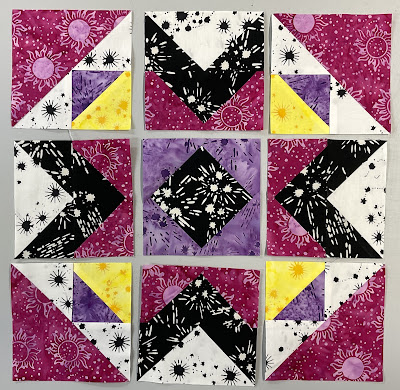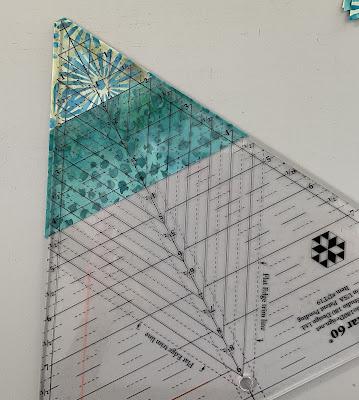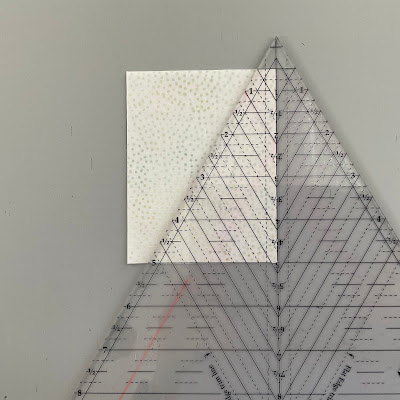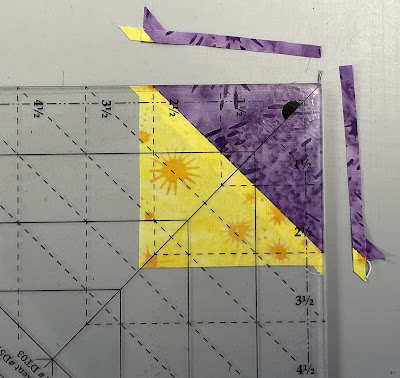In Part 2 of this tutorial for Block Party Block #56, titled "Birthday Cake," we will focus on the flying geese units and the finishing touches for the block. If you're looking for the tutorial on the Square Squared unit, please refer to last month’s blog, Part 2 of Block PartyBlock #55, where I covered it in detail.
If you missed Part 1 of the tutorial for this block, you
can find it HERE.
To download the block, click on this link: https://bit.ly/BPB56-BirthdayCake
When determining your block size, consult your pattern-cutting charts and tool instructions to establish the starting size for the squares and strips.
Flying Geese
Now, let's discuss those Flying Geese units. Without the Studio 180 Design Wing Clipper tool, I would still struggle to make perfect flying geese units. The tool's instructions demonstrate the nudge construction method, which involves nudging your small square toward the center of the large square by a few threads. In the past, I've noticed that some of my students had difficulty with this method.
Did you know another approach doesn’t require nudging those small squares? Deb refers to this as the No-Nudge Method. For this method, you cut your small and large squares slightly larger and position the small squares along the edges of the large square. This method provides extra wiggle room for creating those oversized units for that perfect trim down.
Studio 180 Design also provided a No-Nudge Method cutting chart on its Free Downloads page. If you find the nudging method challenging, you should give this a try.
I will guide you through the No Nudge Method process in this tutorial.
No Nudge Method
First, using the No Nudge Method cutting chart, cut four small squares and one large square to create four flying geese units.
With your Quilter’s Magic Wand, mark two stitching lines ¼” away from the center diagonal on the wrong sides of your small squares.
Position two small squares diagonally on opposite corners of the large square, ensuring they align with the raw edges of the large square. Stitch along the drawn lines.
Cut down the middle.
Press the seams toward the small triangles (or wings).
Position the remaining two small squares on the units, again lining up the raw edges.
Stitch along the lines and cut down the middle, pressing toward the small triangles.
 |
| Right-Handed |
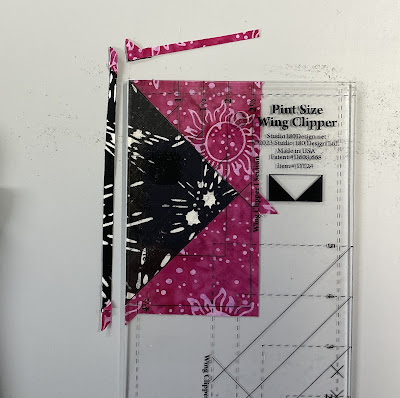 |
| Left-Handed |
Place your flying geese unit on the cutting mat. Align the Wing Clipper's diagonal guidelines with the seams of the Flying Geese unit. This will automatically center the tool over your pieced unit. Trim up and across the unit.
 |
| Right-Handed |
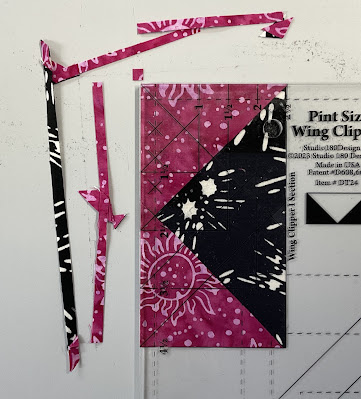 |
| Left-Handed |
Rotate your flying geese unit 180 degrees and reposition your Wing Clipper to align the previously trimmed raw edges with the correct size for your unit, ensuring the “X” at the top matches the intersection of the seams. Trim up and across the unit.
Repeat this process for all your flying geese units for your block.
Block Construction
Now that all your units are complete, it's time to assemble your block.
Start by arranging the units to form your block. Next, stitch the units together into rows. Finally, stitch the rows together, pressing the seams open again to complete your quilt top.
You have now completed Block Party Block #56. I hope you enjoyed this tutorial. Please check back next month for another Block Party Block release. In the meantime, feel free to explore the other Block PartyBlocks on my website.












